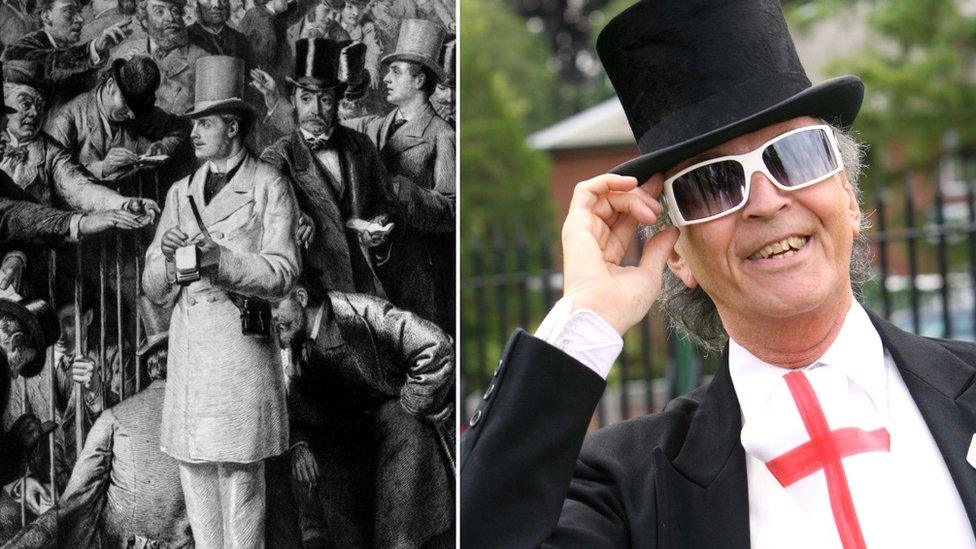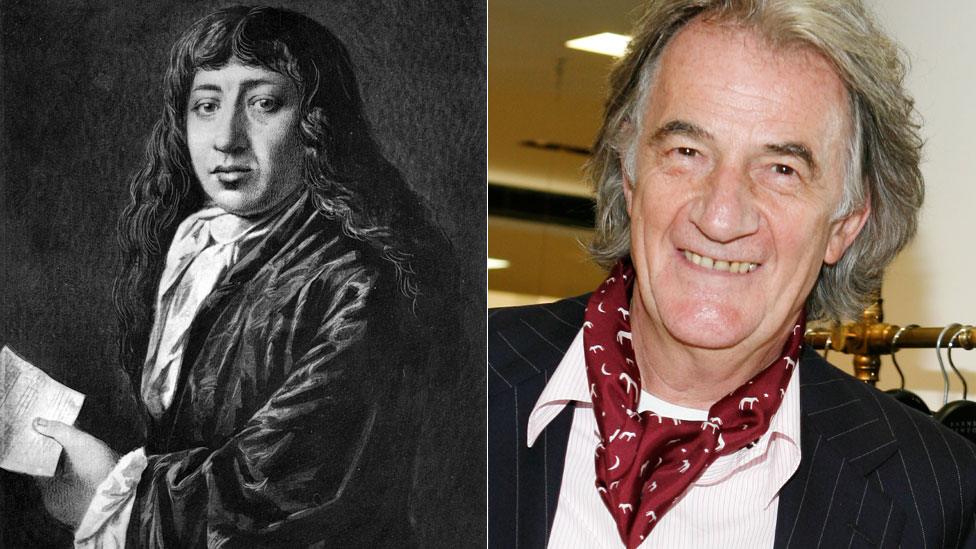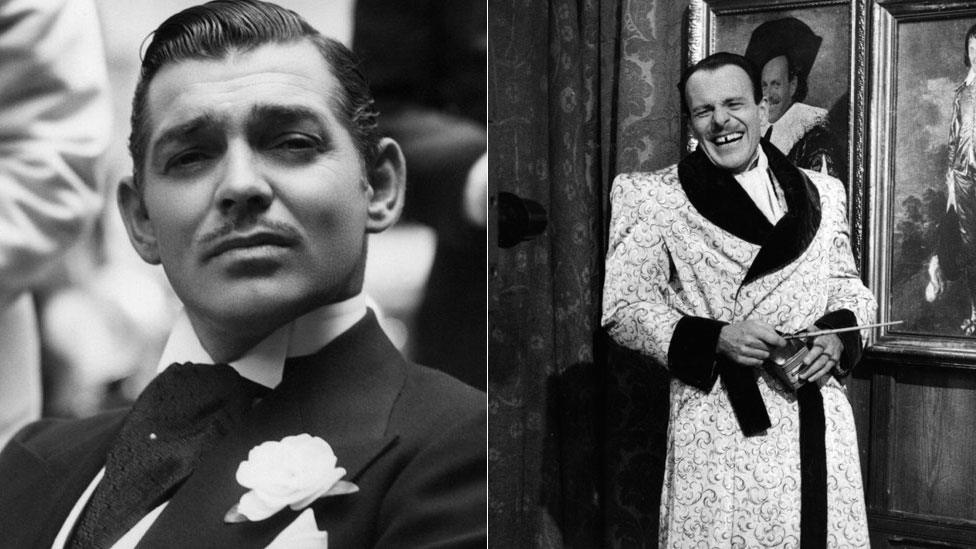Banned from the royal enclosure: The rise and fall of the ascot tie
- Published

Royal Ascot then and now: The ascot tie went from being the height of fashion to being banned in the royal enclosure
As Royal Ascot comes to a close and the finery and frippery of the royal enclosure is packed away, one item of clothing will not have to be replaced in the wardrobe - because it is banned. Ascot ties - once the neckwear of choice - are not allowed to be worn at Ascot. What's the story of their rise and fall?
Once, there was rarely a better way for wealthy gents to subtly boast about their riches than to proclaim their status via their neckwear.
Although not a common method now, having been replaced by showy watches and designer labels, in the late 19th Century it was all the rage for the well-connected and well-to-do to slip on the "gentleman's accessory of grandeur" - an ascot tie - to demonstrate their affluence.
Firstly, though, is an ascot different from a cravat?
An ascot - also known as a "day cravat" is the form of cravat we're familiar with today.

It's a neckband with wide pointed wings, folded over, and fastened with a stickpin. The ends are typically tucked inside the collar of a shirt and although it's a bit fiddly, there are plenty of tips on how to tie one, external.
Traditionally made from pale grey patterned silk, the ascot is now more commonly seen in bright - some might say lurid - colours.
Named after the racing gala Royal Ascot, it would be easy to assume the royal enclosure is overflowing with male throats clad in silk.
But the ties, they are a-changin' and since 2012, the event's dress code stipulates, external: "Gentlemen are kindly reminded that it is a requirement to wear either black or grey morning dress which must include a waistcoat and tie (no cravats)".

Diarist Samuel Pepys and fashion designer Paul Smith - both fans of the cravat

The evolution of the ascot, or day cravat
According to the Academia Cravatica, external - a Croatian organisation dedicated to the preservation of the cravat, a cravat is merely "a scarf or piece of fabric worn around the neck".
Why are the Croatians bothered? Because that's where cravats come from.
Croat soldiers serving under the French army during the reign of Louis XIII wore military kit which included picturesque scarves distinctively knotted at the neck. Enlisted soldiers were likely to have a coarse cloth, while officers might swaddle their necks in fine linens and silks.
The fashion spread through France and Regency dandy "Beau" Brummell - made it popular with the English.
Thus the cravat became a way of displaying both sartorial elegance and wealth.
By the time Victoria came to the throne they were well-established staples for the suave.


"I like your ascot". "I like yours too", as radio personality Nicholas Parsons and former editor of Punch magazine Sir Francis Cowley Burnand might have said, had they not been born in different centuries
The increase in influence of the industrial businessmen towards the end of the Victorian era saw middle-class men eschewing stiff neckwear and adopting a less formal form of tie.
Off they went to watch the horses at Royal Ascot with their loose necktie. It became quite the thing to wear at the meeting and eventually "ascot" became its name.
According to the Gentleman's Gazette, external, - motto "helping you look dapper and dandy" - this kind of neckwear was accessible even to the middle classes, while also allowing upper-class gentlemen to express their wealth in details, such as expensive tiepins.

From the sublime to the ridiculous: Clark Gable wears his ascot with panache, while Terry Thomas' cravat adds a seedy element to his - admittedly already seedy - smoking jacket
The further a man had climbed the social scale, the quieter and more subtle his neckwear was, whereas the lower he was placed, the brighter and more varied his neckwear became, according to the gazette. Throughout the years, fashions changed in how the tie appeared perhaps coincided with the mod and psychedelic movements in the 1960s and 1970s.
Perhaps the golden years of the ascot were best portrayed by the likes of the Duke of Windsor, Pablo Picasso and David Niven, but these were sadly superseded by Terry Thomas-alike Brits abroad, lecherous men at parties and drama teachers wearing them with heavy irony. And of course, Alan Partridge.

The reputation of cravats sunk to a low when spoof television personality Alan Partridge sported one while advertising canal boat holidays
So what's a chap to do if he can't wear his ascot to Ascot?
There's a bit of a resurgence.
According to fashion journalist Julian Bennett, "the ascot tie, which was a symbol of wealth during the 19th Century is still heavily used in everyday fashion today and can still be seen on the catwalks from top designers around the world".
If you've got just a minute, you might take a leaf from Nicholas Parsons' sartorial stylebook. He describes himself as "a dedicated wearer of the cravat".
And according to the Cravat Club, external (yes, there is one), gentlemen should try "experimenting with their ascot, such as tucking it into a polo shirt".
"Why not wear it on the outside of the shirt paired with a tailored suit, waistcoat or fitted jacket?", the club asks.
Why not indeed?